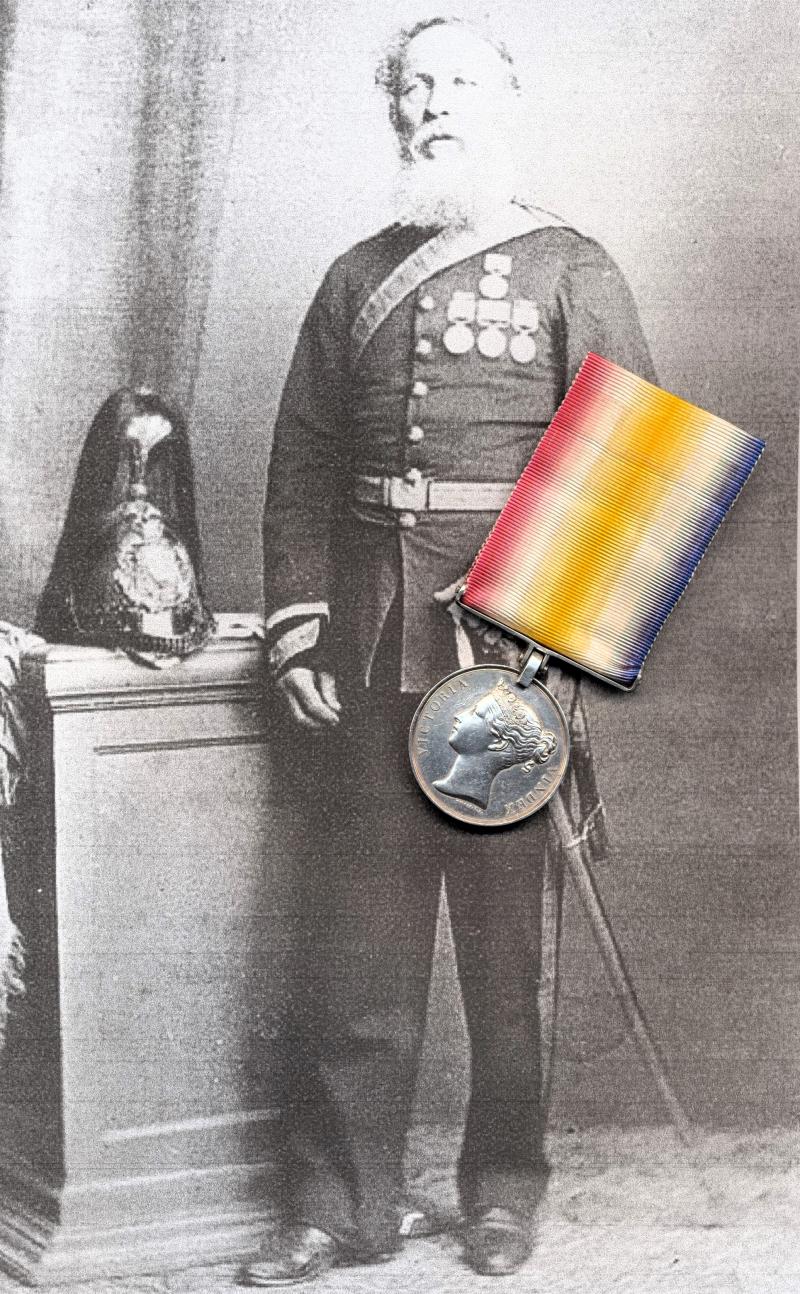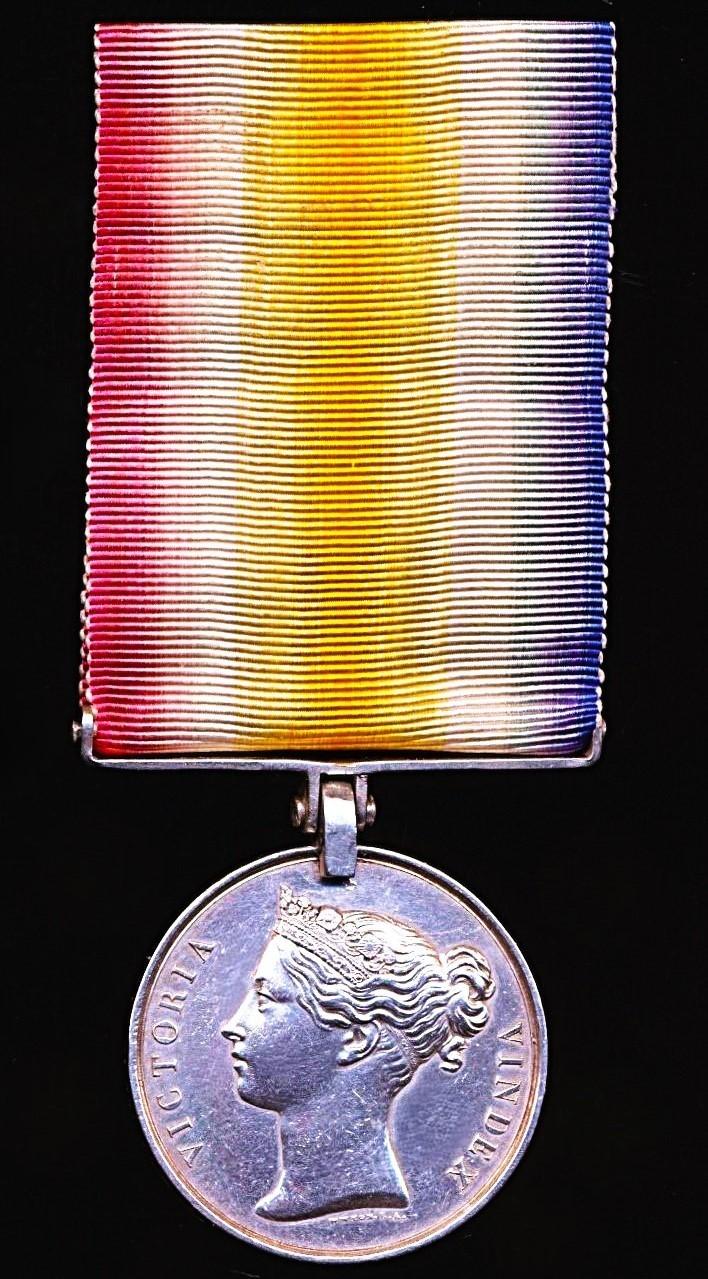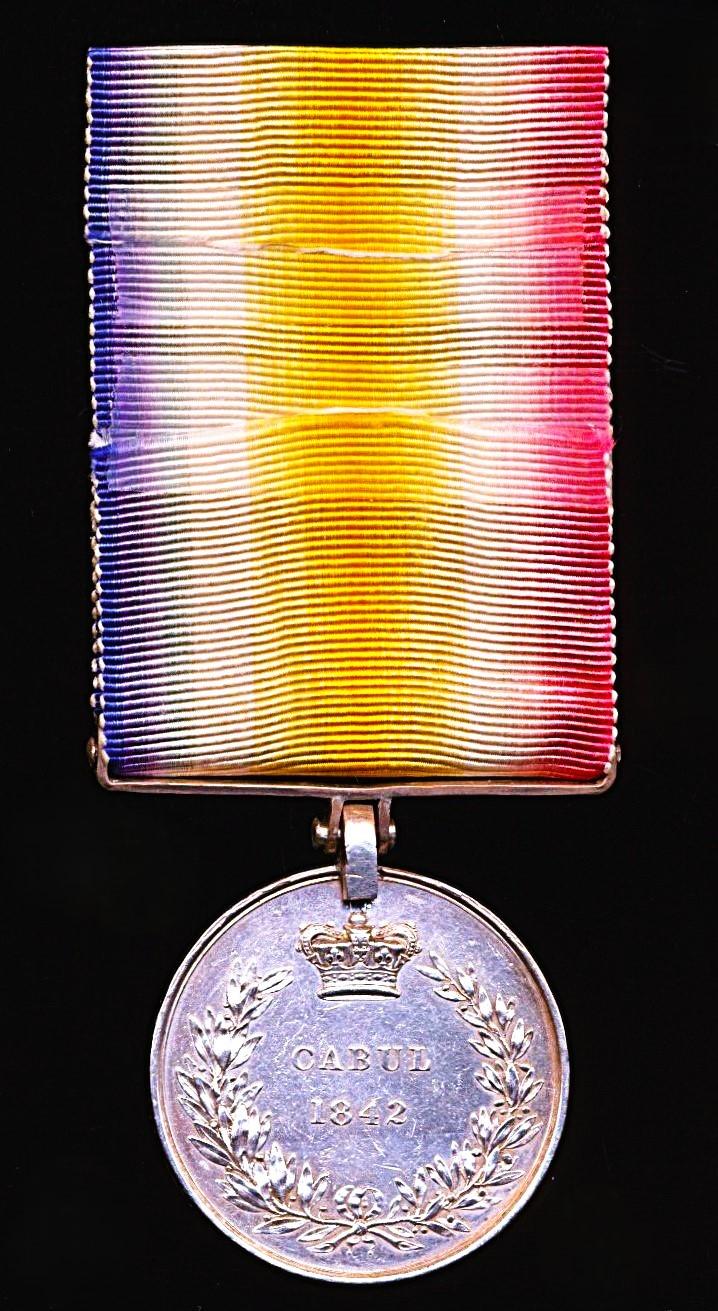First Afghan War: Cabul Medal 1842 (* Regttl. Sergt. Majr. Geo’ Kauntze 3d. K.O.L.D. *)
The medal with contemporary regimentally engraved 'serifed' naming. The medal fitted with a silver clip and a straight hinged suspension
Photograph with Medals-Up: Reference several on-line genealogical websites (e.g. WikiTree) for biographical details on the recipient, George Ernest Francis Kauntze includes splendid period photographs of the recipient in uniform wearing medals
Wounded-in-Action: Sergeant-Major Kauntze was thrice wounded in three different battles during the 1st Sikh War (Sutlej Campaign)
Awarded Battlefield Brevet Commission for Bravery: For his bravery at Moodkee, Lord Hardinge bestowed a battlefield commission on the recipient, appointing him a Cornet
George Ernest Francis Kauntze, son of Edward E. Kauntze (a German national who served as a Musician with 11th Light Dragoons, was a native of Guernsey, Channel Islands, where he was born on, 2 May 1806. He died at Benares (now Varanasi), Uttar Pradesh, India on 28 April 1873
Reference 'The Broad Arrow' issue of 7 June 1873, for the recipients - syndicated obituary - that we are quoting in full:
Quote,
MAJOR G.E.F. KAUNTZE, 3RD LIGHT DRAGOONS - Another veteran has passed away from this world's stage. On the 28th April Major G. E. F. Kauntze died at Benares of cholera, at the age of 68. The deceased entered the army on the lowest rung of the ladder, but was soon brought into notice by his steadiness and courage. He was present with the 11th Light Dragoons, as sergeant-major, at the siege and capture of Bhurtpore in 1825-6, for which he received a medal and clasp. He exchanged from the 11th to the 3rd Light Dragoons, with which regiment he served throughout the campaign of 1842 in Afghanistan (medal), and was present at the forcing of the Khyber Pass, capture of Mamoo Khail, storming the heights of Jugdulluck, actions of, Tezeen and Huftkotul, and occupation of Cabul. He served also in the Sutlej campaign of 1845-6, and was present at the battles of Moodkee and Ferozeshah, and Sobraon. He was wounded at Moodkee and Ferozeshah, and severely at Sobraon. At Moodkee he had the good fortune to obtain the honourable notice of Lord Hardinge for his bravery, who rewarded him with the commission of cornet on the field of battle. Cornet Kauntze served in the Punjaub campaign of 1849-9, when he was made lieutenant. He was present at the affair of Rumnugger, the passage of the Chenab at Wazeerabad on the 1st December 1848, with a force under Sir Joseph Thackwell, action of Soodalapore, and battles of Chillianwallah and Goojerat. He returned with his regiment, the 3rd Dragoons, in 1853 to England, and in 1855 obtained a Captaincy in Her Majesty's 42nd Foot. On the reduction which took place at the close of 1856, Captain Kauntze was placed on half-pay. On the breaking out of the mutiny, he volunteered for active service, and on the 27th of October embarked with the 7th (Princess Royal's) Regiment of Dragoon Guards, which arrived at Kurrachee on the 7th January, 1858. The regiment was stationed at Sealkote. After gaining his Majority the deceased retired form the army, and took up his abode at Benares. He was one of the keenest sportsmen of the age, and up to the time of his death used to go out for days together shooting. From Muttra to Moradabad, he had been heard to say, he had passed every foot of the ground in search of deer and other game.
Unquote
An outstanding medal of type to a British Cavalry Officer - and briefly for a time an officer of the 42nd Foot (Royal Highlanders / Black Watch) - who rose through the ranks and was a battle hardened casualty veteran of multiple early Indian campaigns, who had been commissioned in the field for his bravery!
Condition: GVF
Code: 24768







